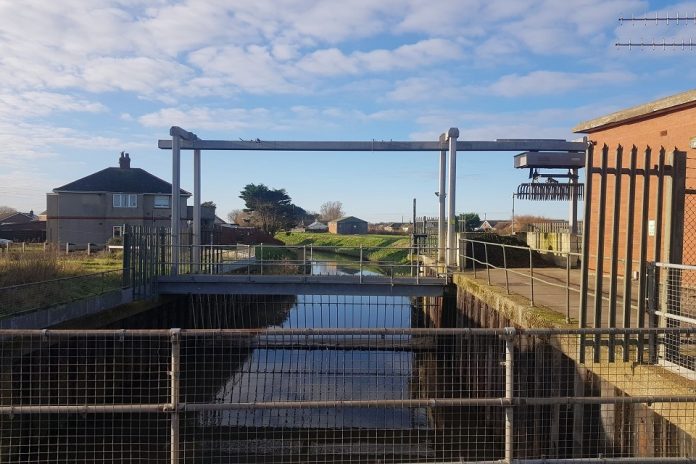The work is being carried out on the land drainage outfall. These outfalls are designed to prevent back flow from the sea causing flooding inland during extremely high tides.
This work will better protect 25 homes which are included in the 20,000 properties that the Saltfleet and Gibraltar Point Strategy sets out to protect.
The project will take 8 weeks to complete and will reduce the risk of flooding similar to the tidal surge in December 2013 when the road and nearby properties were flooded.
The outfall upgrade will include the replacement of the existing gate, which will be closed when high water is forecast. The air vents that lead to the sea and prevent flood water escaping will also be raised to reduce the risk of overtopping.
During the work the river flow will be diverted to the adjacent channel, with fish and eel protection measures in place.
The work will be conducted within the watercourse so it will need to take place at low tide during January and February. This means there will be some early mornings, late evenings and weekend working.
Deborah Campbell, Flood Risk Manager said: “This work is essential for providing continued management of flood risk along the Lincolnshire Coast.
“Our contractors continue to deliver the project whilst adhering to safe working practices.”
This work is in addition to the yearly £7m beach nourishment and the investigation and testing for the delivery of the Saltfleet to Gibraltar Point Strategy.
The Environment Agency has been carrying out beach nourishment work, the restoring and maintaining of sand levels, on the Lincolnshire coast since 1994.
While the work continues to be effective, long-term estimates suggest that the impacts of climate change will mean continuing to use sand alone as a method of managing flood risk may not be suitable. Therefore the Saltfleet to Gibraltar Point Strategy was developed.
Saltfleet to Gibraltar Point Strategy is a plan for sustainably managing flood risk along this stretch of the Lincolnshire coast over the next 100 years. It has a number of options based on the results of a consultation held in 2018.







